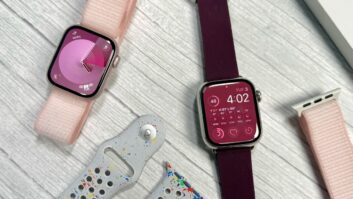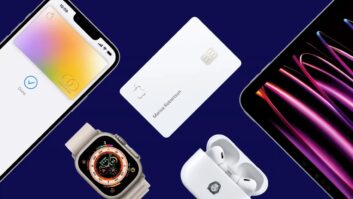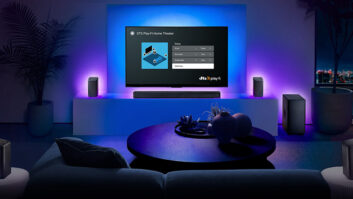NEW YORK – Apple and autosound suppliers don’t seem to be in any particular hurry to drive CarPlay into the car audio aftermarket.
Apple declined to comment on whether it will reach out to aftermarket suppliers, and aftermarket suppliers were unusually close-mouthed about whether they would consider adding CarPlay to their products. Only one aftermarket supplier, Clarion, said it would offer CarPlay in the aftermarket at some point in the future. Clarion will also offer it to its OEM automaker customers. An executive with another aftermarket company would say only that CarPlay “will be something we examine closely.” In general, the executive stated, “We explore all new technologies, especially ones that Apple brings to the party.”
If CarPlay comes to the aftermarket through retail channels, it could take at least a year, and possibly close to two years, for products to appear in retailers’ demo boards. “If a brand is serious about adding Car- Play, it would take them 18 months for development and up to four additional months for type approval, which is Apple’s evaluation and contractual approval prior to shipment,” said former Kenwood and JVC executive Keith Lehmann. “This is just an estimate and is based upon a development cycle that is not expedited for whatever reason.”
One aftermarket supplier, however, noted that its corporate office in Japan has the CarPlay spec in hand, “but we don’t know if the spec is for OE only or aftermarket as well. But I am going to guess that if the rules allow it, someone will have something [in the aftermarket] by 2015.”
An automaker-branded “aftermarket” head will be available possibly this year from Mercedes-Benz, but only for car-dealer installs. “The CarPlay-aftermarket solution will not be available at retail CE or car-electronics specialty stores,” a spokesperson told TWICE, because “the product will need to be installed by car dealers in their workshops.”
The automaker’s goal “is to offer an aftermarket solution to install CarPlay by the end of 2014, but today we cannot predicate if this time frame includes the U.S. market,” the spokesperson said.
Lehmann questioned whether traditional aftermarket brands would rush to adopt CarPlay, pointing out that “it really doesn’t do anything that an aftermarket solution can’t do.” One auto industry analyst also saw potential drawbacks for automakers.
So far, automakers have announced that CarPlay would be available this calendar year in only a handful of vehicles: the Ferrari FF, Mercedes- Benz C-Class and Volvo’s XC90 SUV. Apple, however, also claimed that other auto manufacturers are working with it to develop CarPlayenabled systems, including BMW Group, Ford, General Motors, Honda, Hyundai Motor Company, Jaguar Land Rover, Kia Motors, Mitsubishi Motors, Nissan Motor Company, PSA Peugeot Citroën, Subaru, Suzuki and Toyota.
CarPlay-enabled OEM infotainment systems display and control select apps running on an iPhone connected via all-digital Lightning connector. The technology is promoted as making it easier in the car to use an iPhone to make calls, use the iPhone’s Map app, select iPhonestored and -streamed music, and receive and send messages. The CarPlay UI would be controlled from factory touchscreens and knobs as well as via Siri voice control.
CarPlay lets users stream iTunes Radio, Spotify and iHeartRadio, and Apple has promised CarPlay will support more streaming apps in the future.
Those are nice features, said Lehmann, but they aren’t likely to persuade many aftermarket suppliers to sign up. “I don’t understand the aftermarket appeal,” he said. “Handing off your user interface to Apple is not in a company’s best interest given Apple’s history of on-the-fly changes, their tendencies toward controlling all development, and restricting customization.”
He continued, “Aftermarket suppliers will probably be last in line for CarPlay licensing and development support. I asked around a bit on the subject of Apple reaching out to the aftermarket on CarPlay-equipped product, and there doesn’t seem to be a visible effort by Apple to drive the issue.”
Lehmann also said none of the aftermarket suppliers that he talked with “expressed any urgent need for CarPlay to be planned into future product.” The reasons are “too much probable control by Apple over the user interface, which would homogenize the look of everyone’s main graphics, and the sudden unexpected changes in protocol have been historically disruptive to business.”
On a positive note, Lehmann said OEM adoption to CarPlay “will bring a new spotlight on in-car infotainment systems that could benefit the aftermarket, albeit only slightly.” He noted that “the current blitz of advertising and promotion put forth by the car companies over their infotainment systems has not benefited the aftermarket much.”
Homogenization is also a drawback for automakers, said Roger C. Lanctot, associate director of the global automotive practice at Strategy Analytics. “BMW specifically demurred to participate because they felt their BMW Apps solution was superior,” he said. “In fact, BMW has many more apps up and running on BMW Apps via iPhones than CarPlay currently offers.” However, he noted, “presumably it is only a matter of time before Apple has more apps available.”
If adoption becomes widespread, however, CarPlay will “give Apple a unified, cross brand/OEM solution” that “starts to create some potential for a solution that Apple can support with advertising.” Daimler, he said, has indicated that it intends to port its existing Apple integration to CarPlay.
Allen H. Gharapetian, Clarion’s marketing and product planning VP, sees opportunity for CarPlay in both the aftermarket and OEM industries even though the company already offers select aftermarket Smart Access heads that control key functions of Apple and Android phones.
“As part of our strategy to support consumers, we plan to pursue any path that supports both iOS and Android smartphones, and that means that we plan to support CarPlay in both aftermarket and OEM applications at some point in the future,” Gharapetian told TWICE.
Smart Access lets users connect their smartphones to Clarion head units, use the content stored in the phone, and access such apps as Pandora, Waze and iHeart Radio “while driving in a safe and distraction-free manner,” he said. Smart Access also has “built-in flexibility for customization.”
“We see our Smart Access and Apple’s CarPlay as being complementary,” he said.
“Smart Access apps branch out and enhance the apps supported by CarPlay,” added marketing director Angela Flynn.
Clarion’s two Smart Access heads are the $499-everyday FX-504 double-DIN multimedia receiver, with unannounced ship date, and the $999-everyday NX 604 navigation and multimedia receiver, shipping in May. They use touchscreens to control, and display the content and GUI of select compatible third-party and Clarion-provided apps that run on iPhones and Android phones connected via adapter cables to the heads’ HDMI ports. All apps are optimized for in-vehicle use, and most apps access Cloud-based services. The latter apps include navigation apps, Twitter, Facebook, weather, news, Pandora, iHeartRadio and others. The Smart Access heads also control and display a phone’s music library, contacts and calendar.













